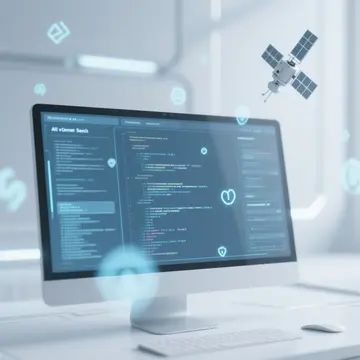Discover the most powerful image to code AI tools that turn visual designs into clean, production-ready code. This guide showcases real tools like Uizard, Anima, and TeleportHQ to help you fast-track your UI development process using artificial intelligence.

What Is Image to Code AI?
Image to code AI refers to a class of machine learning tools that analyze visual assets—such as sketches, screenshots, or Figma files—and automatically generate frontend code. These platforms use computer vision, layout detection, and natural language processing to recognize UI components and translate them into HTML, CSS, React, or Flutter code.
This innovation drastically reduces manual coding time, accelerates prototyping, and improves collaboration between designers and developers. Whether you're building a landing page or a mobile app, image to code AI platforms can handle everything from layout conversion to component generation.
Why Developers and Designers Are Adopting Image to Code AI
With increasing demand for rapid development, the traditional design-to-code workflow often slows down product teams. Here's why image to code AI is becoming the go-to solution:
Speed: Generate front-end code from visuals in seconds.
Accuracy: Tools now detect element types, fonts, spacing, and hierarchy with high precision.
Versatility: Export to HTML, CSS, React, Swift, or Flutter depending on your tech stack.
Scalability: Automate UI rendering for hundreds of screen variants effortlessly.
Best Image to Code AI Platforms Worth Trying
?? Uizard
Uizard is an AI-powered design tool that converts wireframes, screenshots, and hand-drawn sketches into editable design components and clean HTML code. Its image to code AI engine can even transform scanned napkin sketches into web interfaces.
?? Anima
Anima integrates with Figma and Adobe XD, enabling designers to export high-fidelity prototypes as responsive HTML, React, and Vue code. It’s perfect for bridging the gap between design and development using AI-based code generation.
?? TeleportHQ
TeleportHQ is a low-code platform with robust image to code AI capabilities. Upload images or design files and instantly get React or HTML boilerplates. The tool also includes AI layout suggestions and live collaboration.
?? Builder.io
Builder.io uses AI to interpret visual designs and turn them into optimized front-end code blocks. With built-in headless CMS features, it suits both marketers and developers aiming for pixel-perfect outputs.
How Image to Code AI Works Under the Hood
These tools rely on a mix of computer vision, OCR, and machine learning models trained on vast UI datasets. Here's a simplified breakdown:
Step 1: Upload or input a visual asset (image, sketch, or design file).
Step 2: The AI analyzes layout structure, and identifies UI components like buttons, text boxes, and navbars.
Step 3: Based on recognized elements, it generates corresponding code (HTML, CSS, JSX, etc.).
Who Should Use Image to Code AI Platforms?
The rise of image to code AI is beneficial across multiple roles:
Front-End Developers: Automate basic markup and focus on logic.
UI/UX Designers: Preview how designs will render in browsers or apps.
Startup Founders: Quickly prototype and test ideas without a dev team.
Agencies: Deliver design-to-code projects faster and more affordably.
Related Tools That Support the Workflow
While the core image to code AI tools generate frontend code, several other platforms complement this ecosystem:
Figma & Adobe XD: Leading design tools whose assets can be imported into AI coders like Anima and Builder.io.
Locofy.ai: A plugin that adds AI coding functionality inside design environments for seamless export.
Sketch2Code (by Microsoft): Converts hand-drawn layouts to HTML with Microsoft's AI-powered backend.
Common Limitations and Things to Watch Out For
Although image to code AI tools are evolving rapidly, users should still be aware of:
Code Cleanliness: Some tools generate bloated code needing manual refactor.
Framework Limitations: Not all platforms support every frontend framework.
Design Fidelity: Minor layout issues may require manual tweaks for pixel perfection.
The Future of AI-Driven UI Development
As AI continues to mature, expect even tighter integration between design tools and IDEs. Platforms will likely evolve to support full-stack generation, accessibility compliance, and real-time previewing across device types.
In the near future, image to code AI could become a default layer in design and development workflows, especially in agile environments that demand iteration speed.
Key Takeaways
? Image to code AI automates front-end code generation from visual assets.
? Top platforms include Uizard, Anima, TeleportHQ, and Builder.io.
? Useful for developers, designers, and rapid prototyping teams.
? Integration with tools like Figma and Sketch enhances usability.
? Keep an eye on AI code cleanliness and design fidelity.
See More Content about AI CODE
